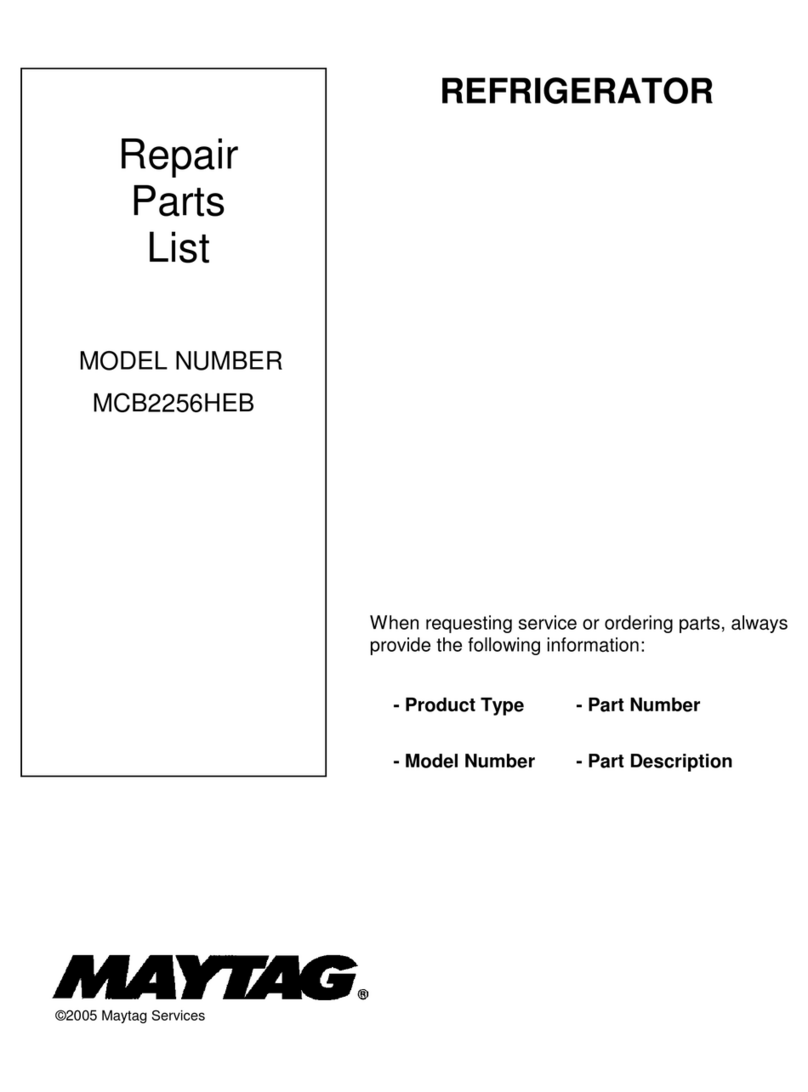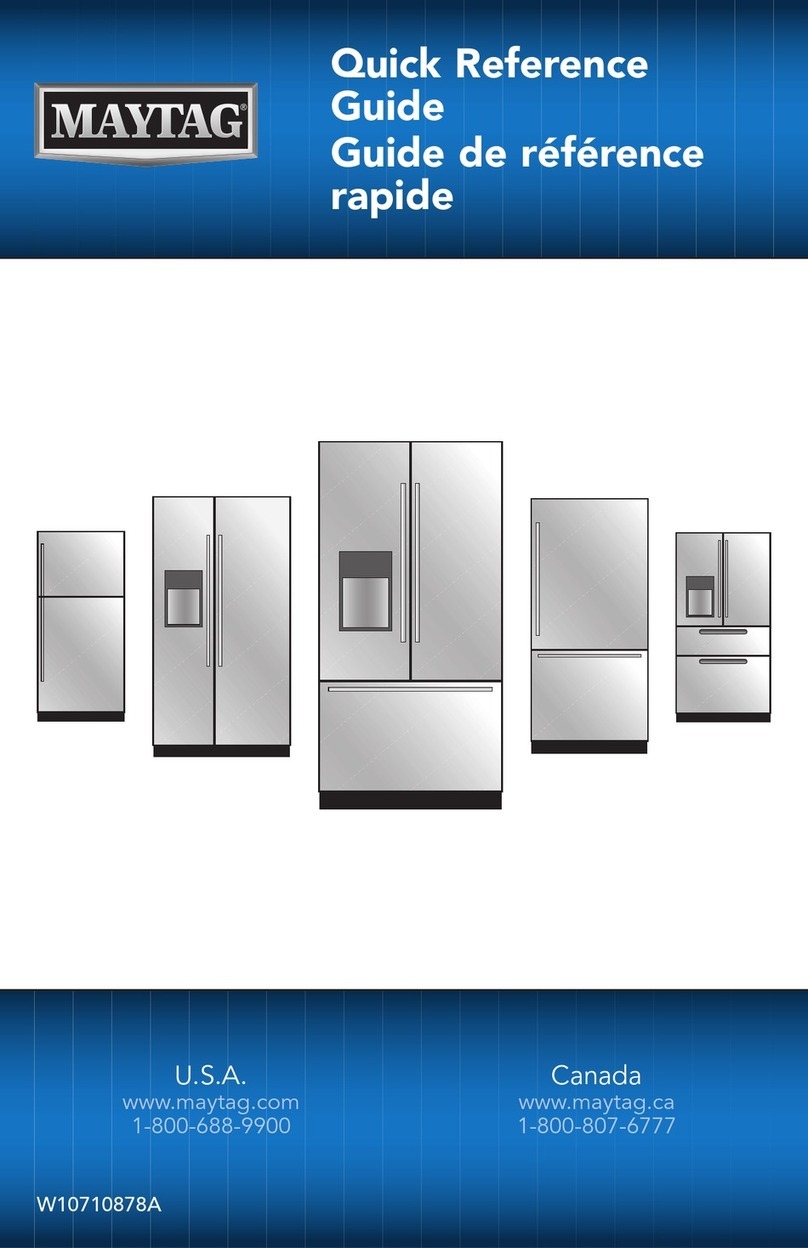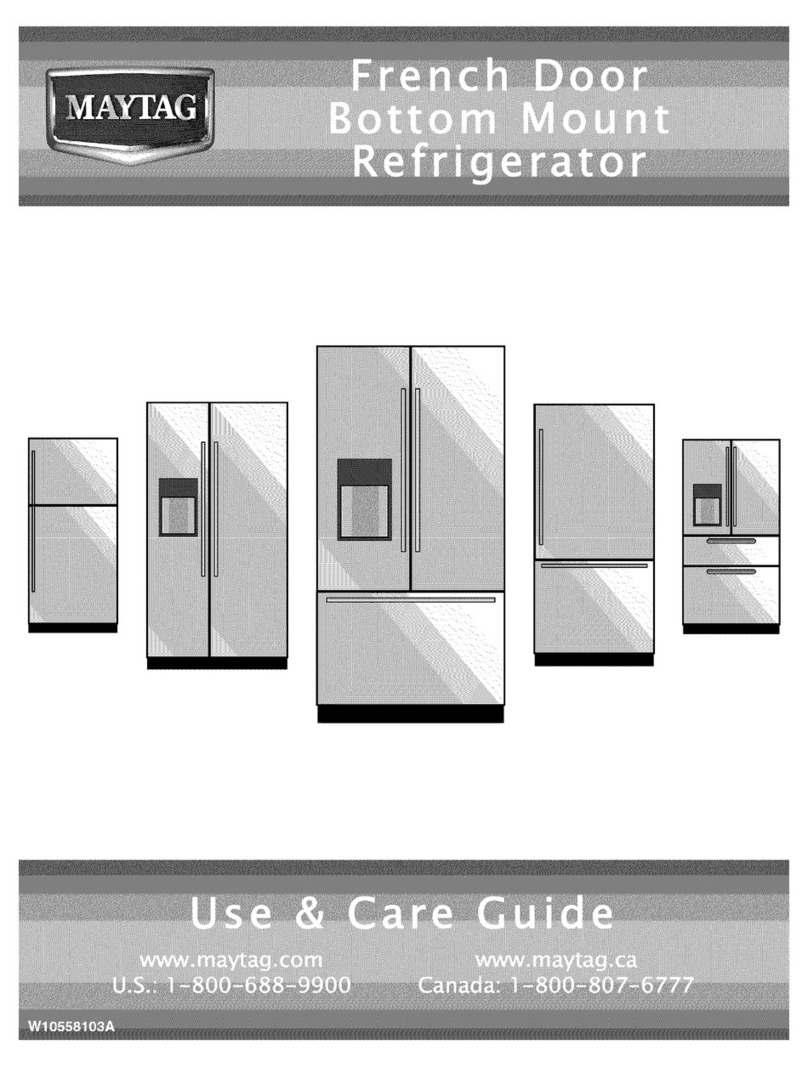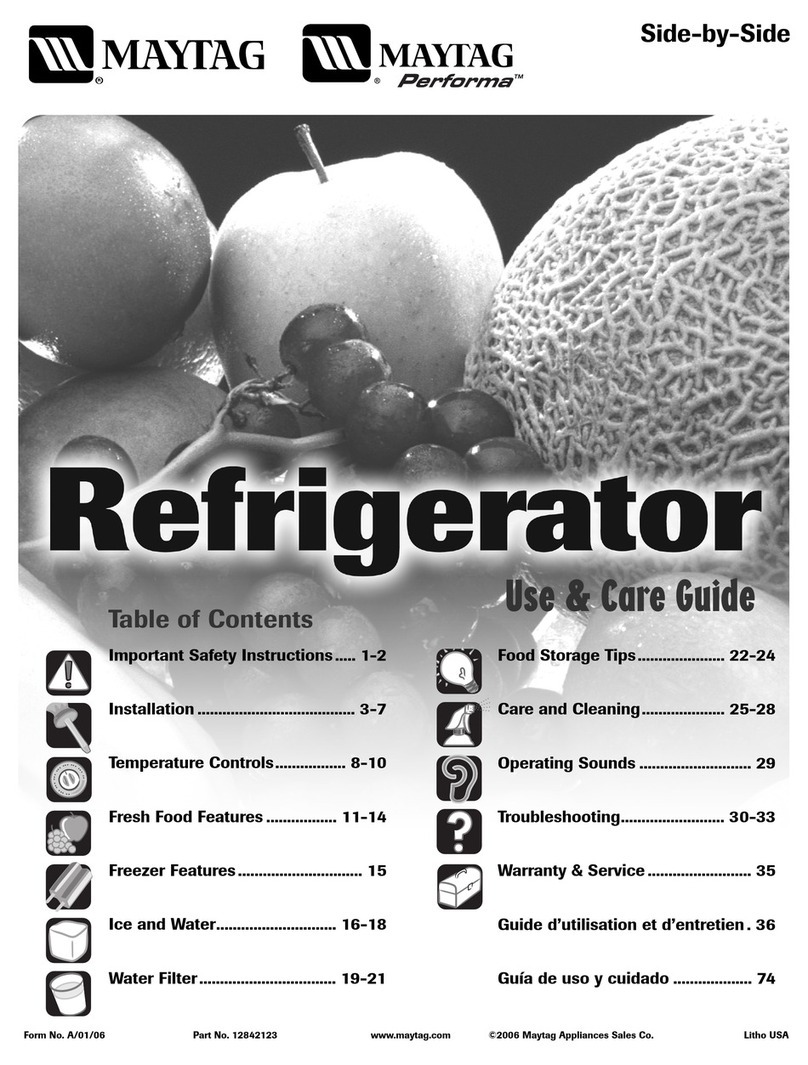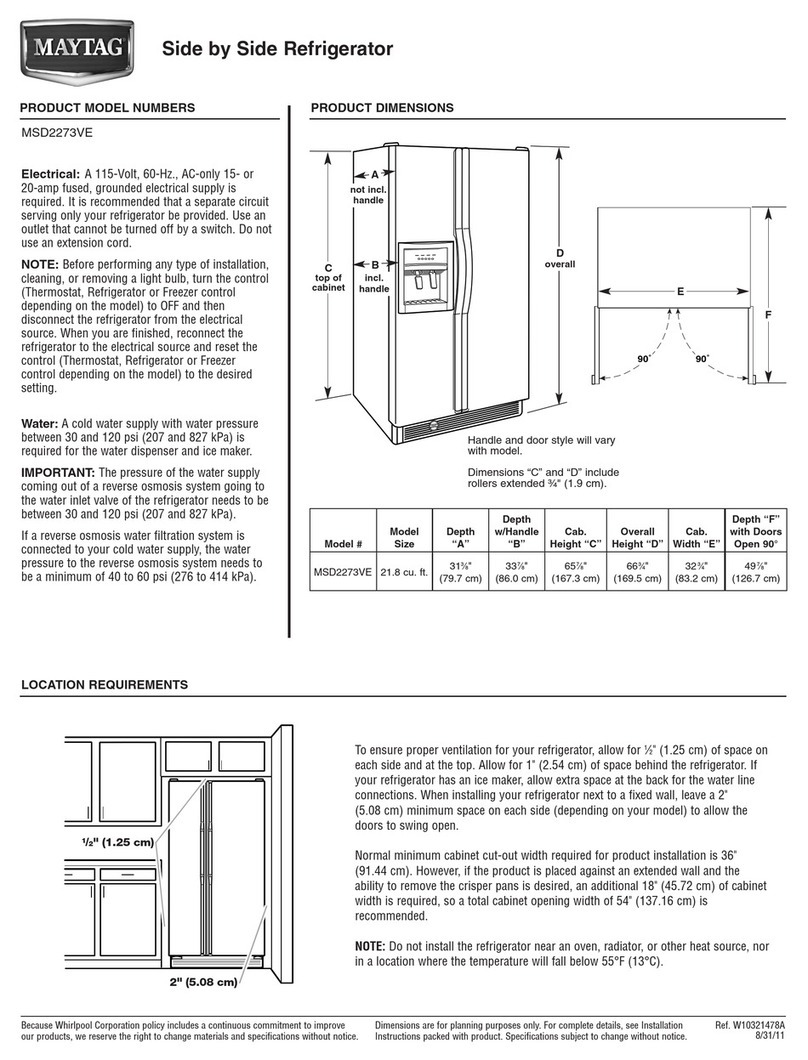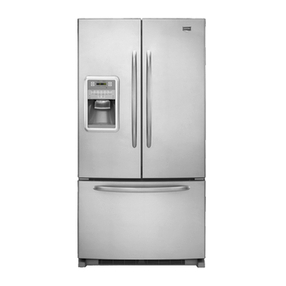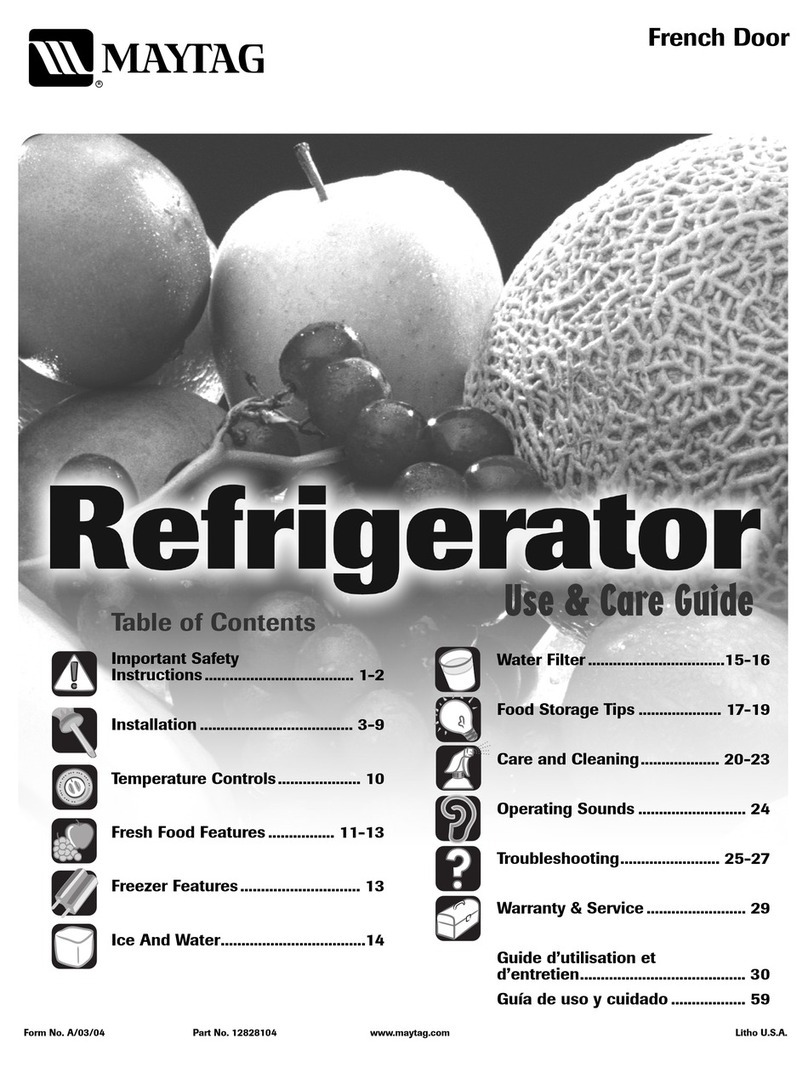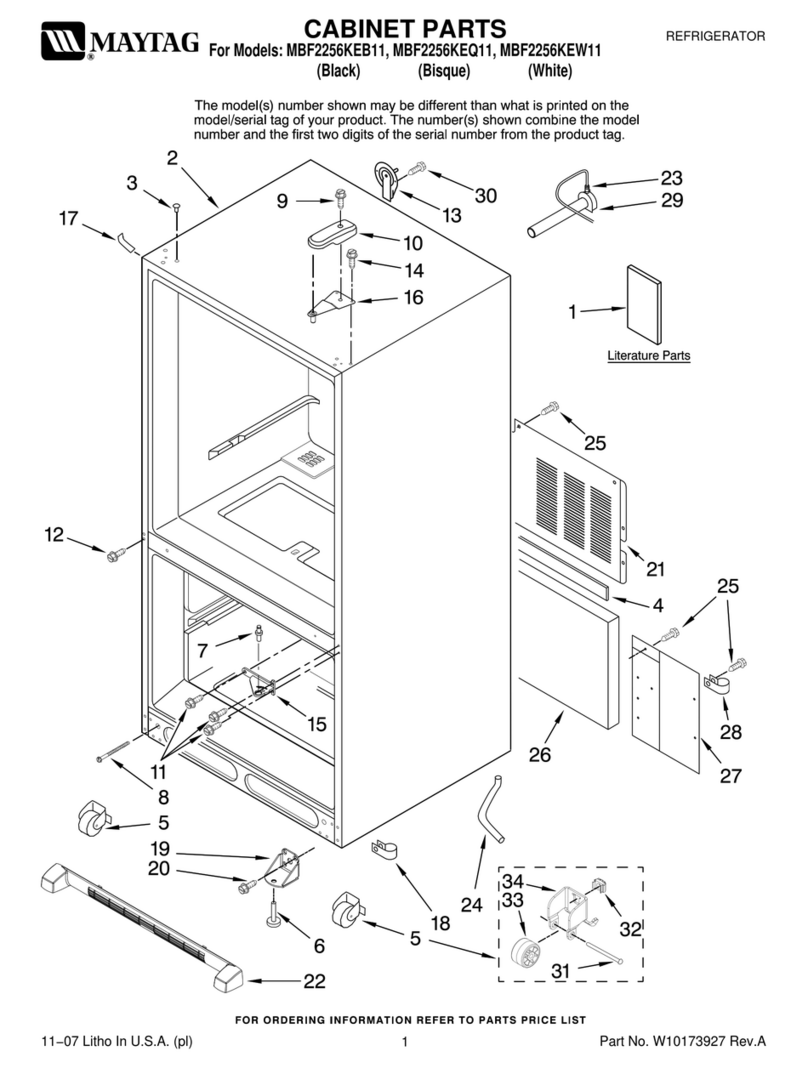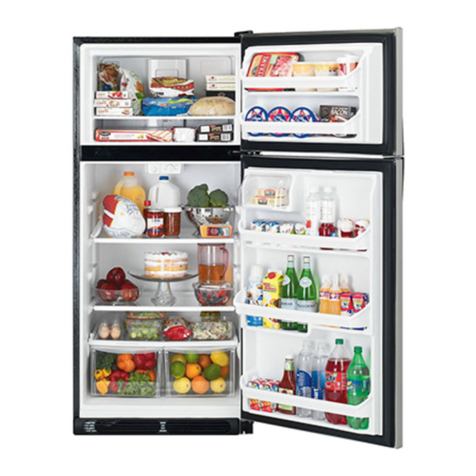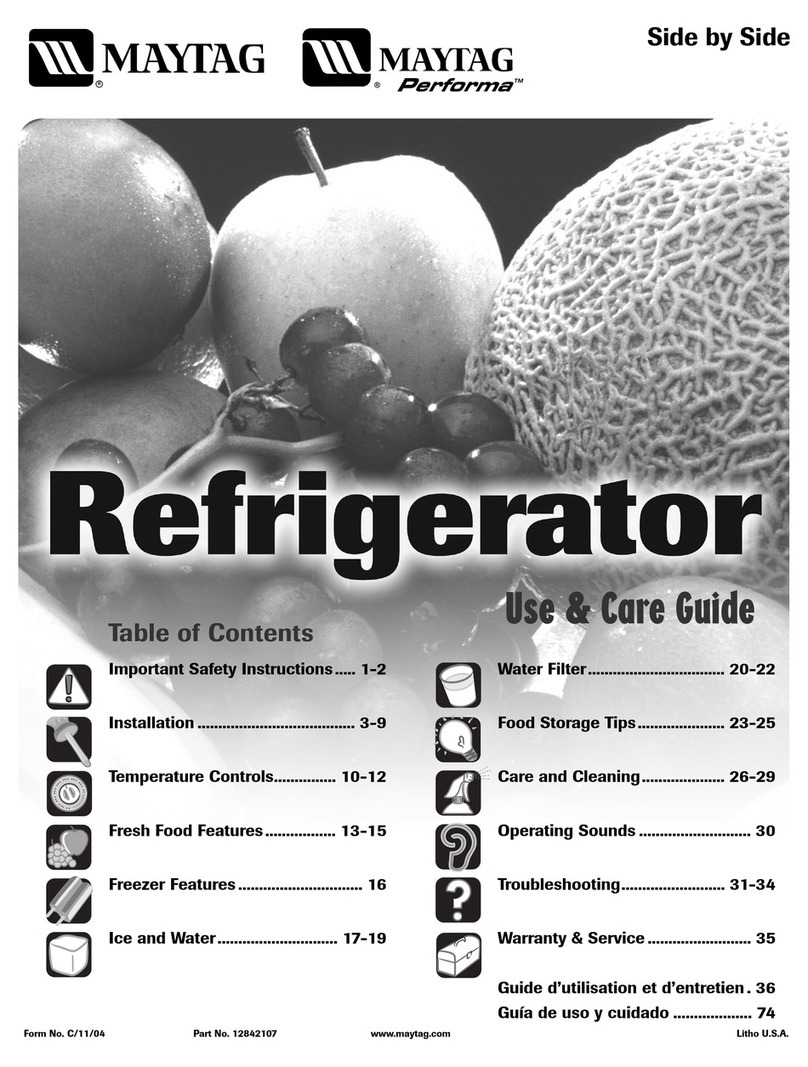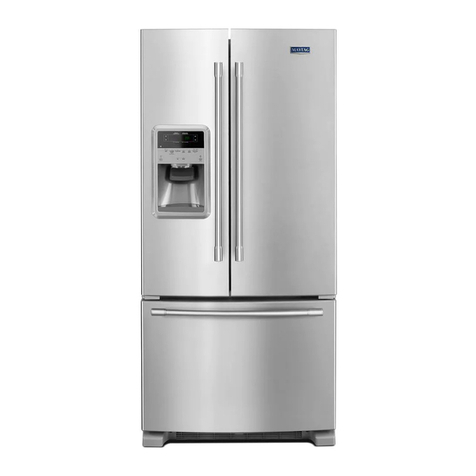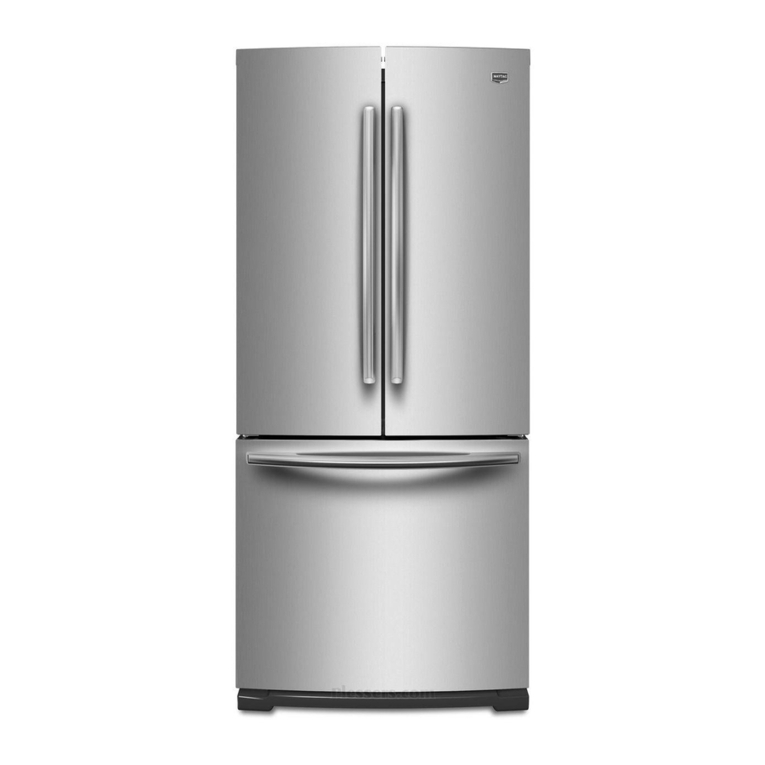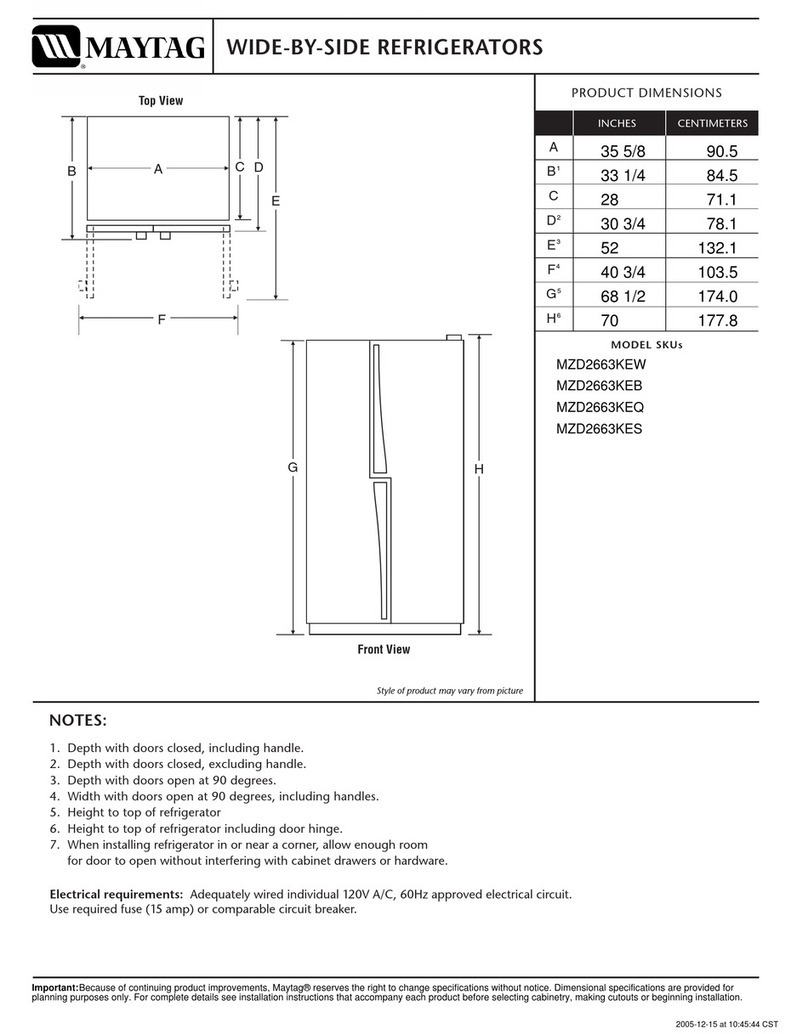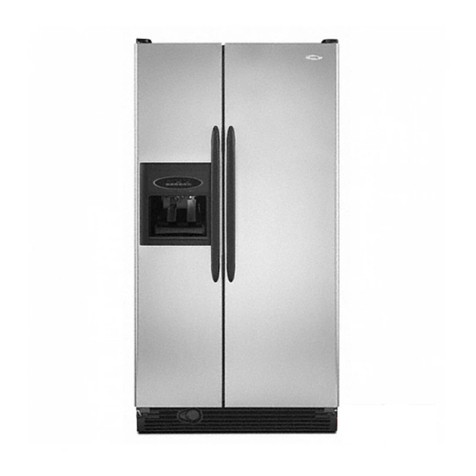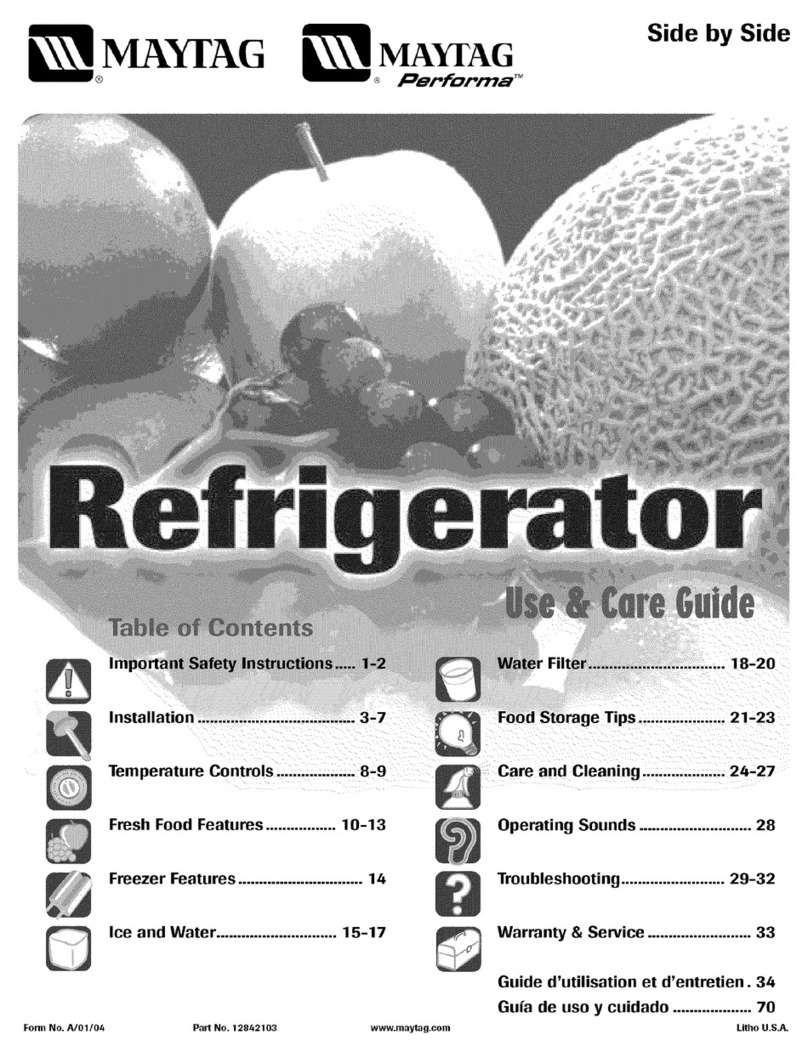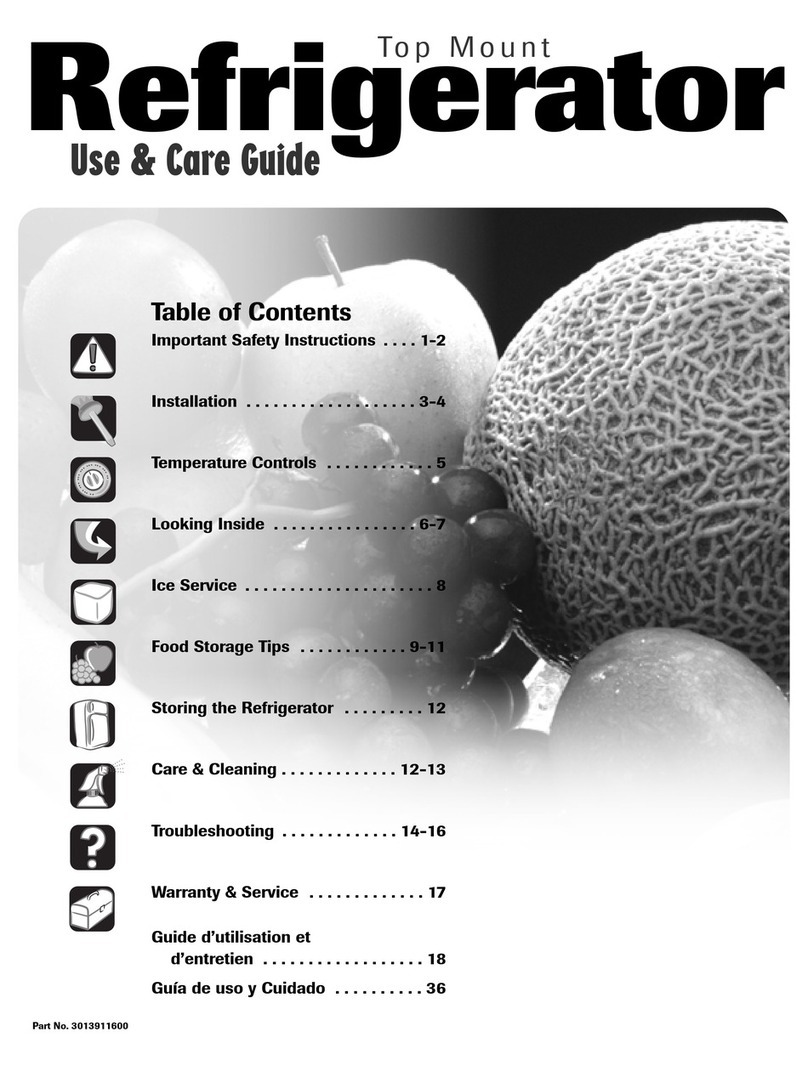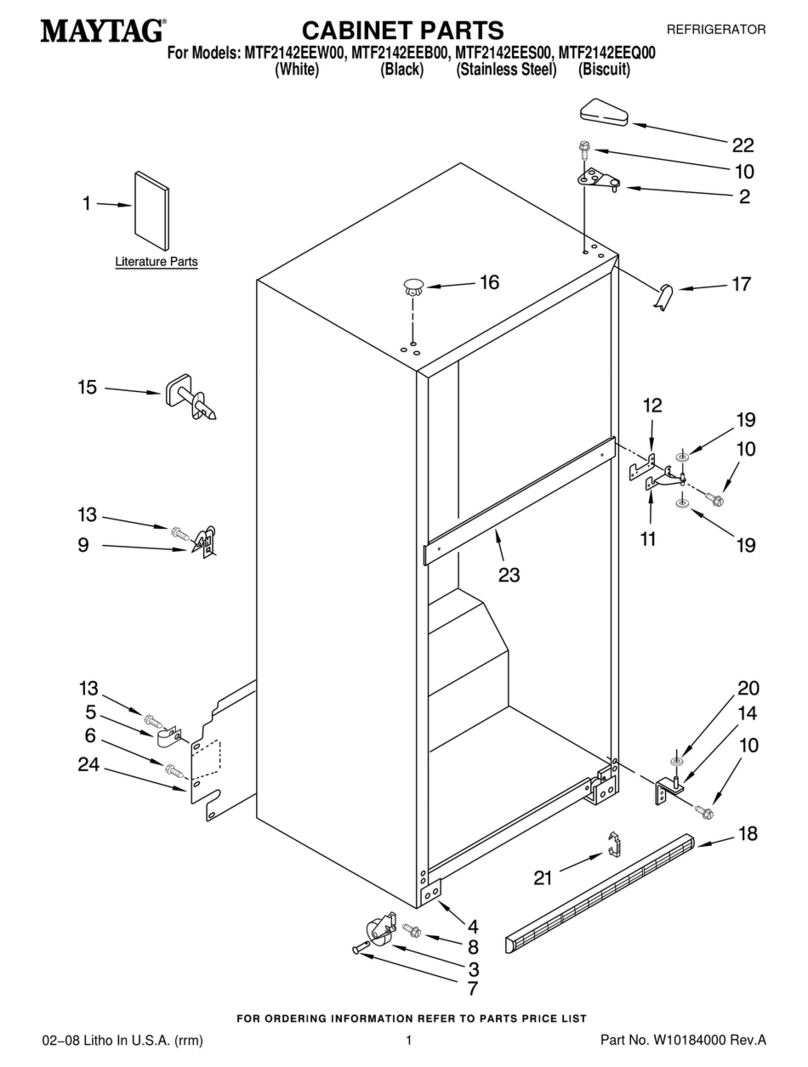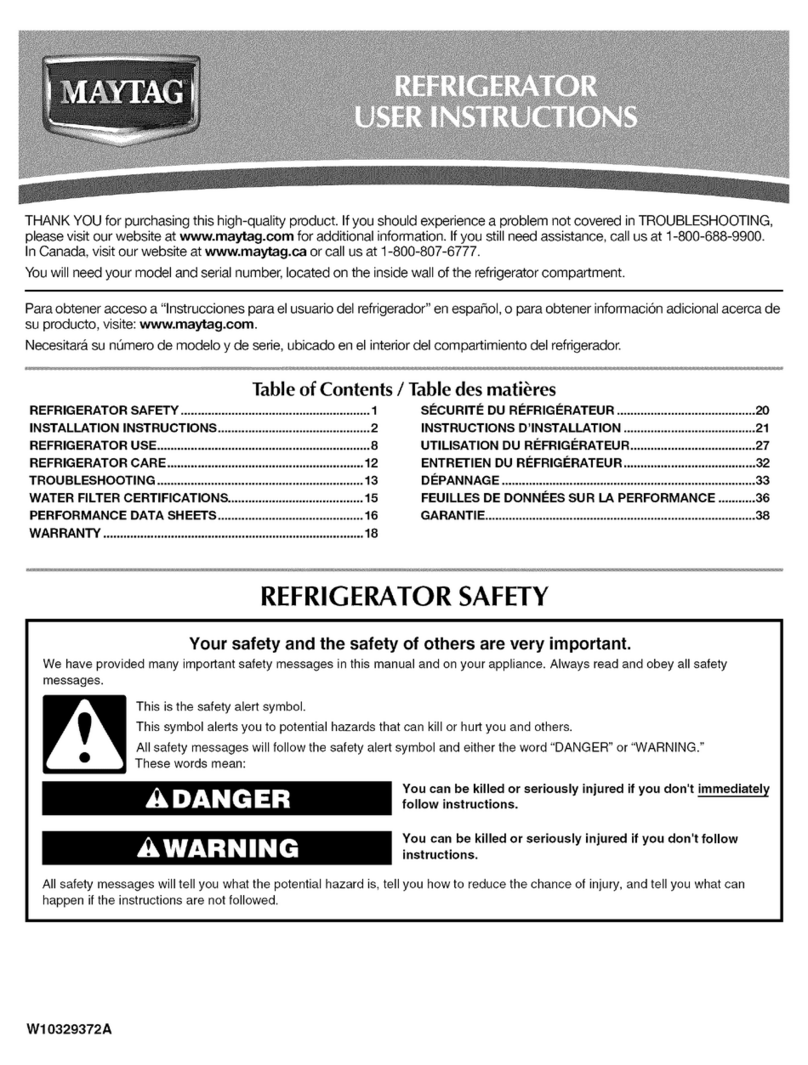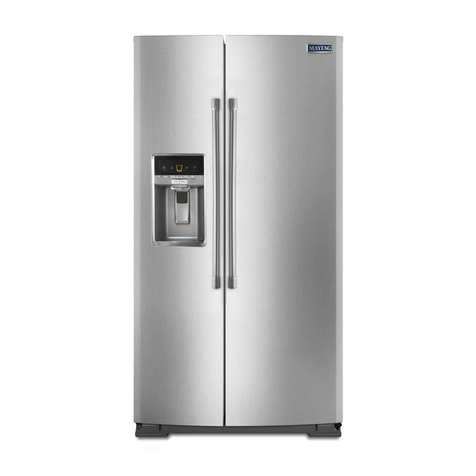INSTALLATION
Remove and discalx] cantilever shelf" packing
clips ]ocated just above each shelfwhe_> it hooks
onto the frame. To remme plastic clips, :_dggle
tile clips sideways and pull straight out.
Locating Your Refrigerator
l. Allow a free tlow of air through the front base
grille.
Your model should not be iitstalled where the
room temperatm'e x_411go below 55 degrees
F., beea isc it will not ruli
:_" ' t're(t,,e,_tl } enough
to maintain proper temperature in the freezer.
,For ease of installation, you should leave a
space of about I/2 inch [)etx_een the
refrigerator and adjacent wails or c_Ninets. If'
the refrigerator is pIaeed with the hinge side
against a wall. you may want to have
additional space so the" door can be opened
wider.
Important Leveling
Information
_7,ur refrigerator is equipped with front and back
rollers so it can be moved away from the wall for
cleaning. The front rollers are adjustable and
should be positioned so the refrigerator sits
firmly on the floor and is level.
To adjust the front rollers:
1. Remove the base grille by_gras.l_in_.......the ends,
literand pull out.
'I
_2. "Ik_level the refrigerator, use a screwdriver
and turn roller adjusting screws clockwise to
raise the cabinet or eountercloelG:4se to lower
the cabinet.
TURN CLOCKWISE TO
RAISE CABINET CORNER
TURN
COUNTER-
CLOCKWISETO
LOWER CABINET
CORNER
3. It is not neeessarv to lock the refrigerator it_
place, tloweve_; {f that is desirable, turn one
or both of the lockh_g {bet clockwise. They are
located near the f'r(mt wheels.
.
If the floor is not level and it is necessa,_' to
raise the rear of the cabinet, we suggest
rolling the rear wheels onto a piece of
ply, rood or other shim material.
To replace, center the clips in the cut-out
areas and push in until the base grille smq)s
into plaee.
Connecting the Appliance
WAKNING: This appliance is designed to
operateon a nominal 115 volt, 15amp, 60 cycle
line,There shouldbe a separate,grounded"
circuit se_vh:g this appliance only. Do not use :m
extensioi:cord.
This appliance is equipped :_4th a three pronged
gr{mnding plug for :,'our protection against
possible electrk_a] shock hazards. It must b,•
plugged into a grounding receptacle. Where a
standard two-prong wall receptacle is
encountered, it is the personal responsibilit 3 and
obligation of the customer to haxe it replaced
_ith a properly grounded three-prong wall
receptacle. Do notunder any cireumstmiees, eut
or remove the third (ground) prong fi'om the
power cord. Do not use an adapter plug.
©
PAGE 2
